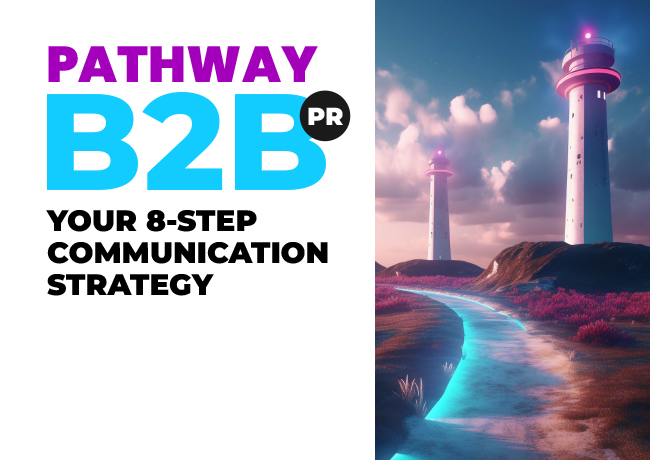
Ready, not Rough: Brands that Are Bold via Spokesperson Training
Imagine you’re sitting in a room. There are bright lights, cameras and mics everywhere. The person across from you is preparing to ask you questions that will affect your company’s reputation.
Imagine you answer them perfectly, and the stars shine down on you proudly! But there is an alternative possible scenario…
1What happens when executives have not had spokesperson training
You’re sitting on your chair, feeling nervous, and your hands start sweating. You have to represent your organisation at its best while you yourself aren’t feeling your best. Any mistake in words, tone, or body language can ruin your company’s image.
What a dreadful situation to be in!
This is what happens when spokespeople and leadership haven’t received vital media training. They can do more harm than good. They might come on camera with the intention of elevating their brand image, but the lack of training turns the tables against them.
A baffling bumble: Why Liz Truss needed spokesperson training
Liz Truss took the internet by storm, but not for the right reasons. If you search for her, the most prominent news pieces that come up are related to her communication bumbles.
Her awkward greeting with King Charles became a meme. She has failed to defend her decisions. She couldn’t justify her later altered statements and narratives. She couldn’t handle tricky and uncertain questions. And she often got confused during interviews, which has led to absurd press statements.
All this added up to immortalising her as a meme. Truss isn’t perceived as credible and certainly not someone to whom people pay attention when she speaks. This is a prime example of a lack of media training.
It doesn’t have to be this way.
2How spokespeople can be bolder than your brand.
A good spokesperson can amplify your marketing and PR efforts tenfold. This is because human connection is priceless, giving your company a face and a personality – people do business with people, not faceless corporations.
Let’s say there are two companies, A and B. Both sell the same thing. Company A has a well-trained spokesperson, and its leadership accepts interviews from time to time. Company B is a faceless brand. It does all its branding and PR through its website and social media. Who will you trust more? Company A, who’s bridling the power of spokespeople to garner trust, sales, and a loyal audience or Company B who’s doing the bare minimum?
A spokesperson distinguishes you from your competitors if they stand tall and strong in the eyes of the audience. This can be achieved with effective spokesperson media training.
3Common mistakes during spokesperson training
Even after getting media spokesperson training, many organisations don’t roar the way they should. And that comes down to shortcomings during the media training. The following are key elements that trainers often neglect, resulting in mediocre spokespeople.
Absence of a clear message, tagline, and value proposition
You should be explicit about your company’s message, what you stand for, and your collective values and opinions. The absence of clear messaging and a value proposition will leave spokespeople making it up, suiting their own preferences and understandings of their vantage point in the company. Those will neither be accurate nor consistent across press appearances.
Overloading the existing marketing team with the responsibility of training a senior staff member
In 99% of the cases, this scenario results in a disaster. Do you think a junior marketer, or even a middleweight marketer will be effectively able to train a seasoned executive? It rarely works like that. Moreover, few marketers are skilled in training spokespeople and that’s nothing to be ashamed of – it takes a specialist skillset.
Your trainer should be someone who can point out every small mistake, give you guidance on how to rectify them, and be ruthless in judging your spokesperson’s body language, tone, words and interaction. An unempowered marketing team will never be comfortable enough to do that. This is why many companies outsource spokesperson training to experts.
Reading from scripts
Many trainers allow people to practice reading from paper or a script, even though they will have to say it all to the press without the script. And when they’re in the spotlight, the spokesperson can get confused, that piece of paper becomes a crutch.
Initially, they might start from their notes, but the key is to gradually eliminate them and encourage the spokesperson to practice speaking on the spot.
Over-preparing for conferences
Rehearsing is mandatory, but over-rehearsing is detrimental. Firstly, the spokesperson gets fed up of saying the same thing again and again. Secondly, they start to remember their sentences word-for-word, which eliminates the personality and emotions, making them sound like a robot.
A professional trainer always knows when to give the trainee a break. They understand that over-preparing is harmful. A break brings the trainee back to the starting point, avoiding the monotony and lack of expressions, which was previously due to low confidence but can also result from over-practicing.
Ignoring the tricky questions
If your company is changing its policies or facing a hard time, how will you positively answer the inevitable questions without harming the company’s reputation? This is a huge part of media training, but also the side that’s neglected the most.
CEOs and executives often don’t prepare for difficult questions. On the day, they answer them straightforwardly or with avoidance, both of which might crack the company’s image.
4Who should take spokesperson training?
Anyone who represents your company and speaks in the media should get spokesperson training.
There’s a huge difference between strongly representing your company and becoming a thought leader and casually talking about your mission and goals. In the media, your words, tone, expressions, confidence and body language all matter equally. You get one thing wrong, and you lose half the battle.
It is important to choose your spokesperson based on these factors:
- Their charisma and personality.
- Their role and authority within the company.
- Disposition to attend conferences on your behalf.
Coming back to whether this person should be trained intensely, we find that simply having been a spokesperson before, is no guarantee of success. Their previous company will have different standards and expectations. Even if your spokespeople have been in the media before, professional training is worth the time investment.
How often do spokespeople need a refresher training?
A period of two to four years is optimal to get refreshers in executive media training. However, this depends on your specific scenario. For example, if you have revamped your brand, your spokespeople will need a top-up to bridge the gap between your old and new style, tone, and narratives.
If your spokespeople haven’t been actively participating in media for over a year, they should also refresh their skills.
5Best practices for spokesperson media training
In our experience, brands with a top-notch approach to They not only prepare their leadership and executives to speak confidently, but also to be a thought leaders and to answer any questions in their wheelhouse with the calm confidence of a mountain lion. Their spokespeople don’t purr; they roar.
The number one must-do for spokesperson and executive media training is to avoid all the substandard practices we discussed earlier. Moreover, here are more tips to ensure your spokespeople hold their ground, even amid difficult press conferences.
Practice confidence and tranquility
It’s not what you say. It’s how you say it. Your tone, words and body language should all exude confidence.
Good media training will take the spokesperson from confusion and nervousness to a relaxed and confident state. Tactics like pausing before answering and maintaining eye contact are tactics that trainers ensure their speakers are adept at recreating under any circumstance.
Create an interview-like environment
You practiced everything, and you’re confident, and ready to speak. However, as soon as you enter the room, the environment distracts you, you feel nervous. The cameras scare you, and your confidence drops into a muggy bog. Oops! You were trained to speak, but not in the right environment.
Your media training should involve practicing in the same environment that you’ll be in during your interview or speech. Face the camera and speak in front of an audience on multiple occasions as practice, so the above story doesn’t become true for you.
Recording yourself and reviewing the footage with trusted associates can help you to refine your messaging too. Be objective when you watch yourself back, gather feedback and go again, some great soundbites can come out this process.
Learn to handle tricky, out-of-the-blue questions
Journalists love controversial questions because they make headlines. You can’t avoid them, so it’s better to prepare for it! Letting people ask you tricky questions during your media training, and preparing for as many such questions as you can is a good start. The following are a few areas that might pop up as difficult questions and are worth practicing.
- Company’s changed policies, statements, and narratives.
- When your organisation is facing a hard time due to company actions.
- Industry trends or external scandals.
Answer like a leader. Learn to defend your point through reasoning and steer the conversation to current scenarios and company goals.
If they have been a spokesperson before, focus on your company’s tone
If the CEO, executives or spokespeople have been in the media before, they would have taken media training previously and will know all the fundamentals. In this case, they will primarily need to work on the current brand voice, company goals, and missions. They need to know every detail of the company to answer every question that’s thrown at them like a pro.
First-time spokespeople may need more camera training
Camera shrinks many people’s confidence. Speaking to a person and speaking to a camera are two separate abilities and need to be trained as such.
For first-time spokespeople, focus more on camera training than anything else. Once they’re able to speak in front of a camera confidently, you can then work on the other skills mentioned here.
Is there a difference between spokesperson training and media training for CEOs?
Spokesperson training and media training for CEOs are the same on the surface, with slight differences due to different trainee needs. A CEO media training includes all that a spokesperson training entails. However, it might focus more on company messaging, tone and thought leadership so people know they’re listening to a leader.
EC-PR understands these small but important differences and trains people for the role they have to play. Our media training prepares leaders and spokespeople to roar or purr according to the occasion; with our support, everyone will listen to them.

Your 8-Step Communication Strategy Guide
A comprehensive guide to delivering your business goals using intelligent and relevant messaging.

